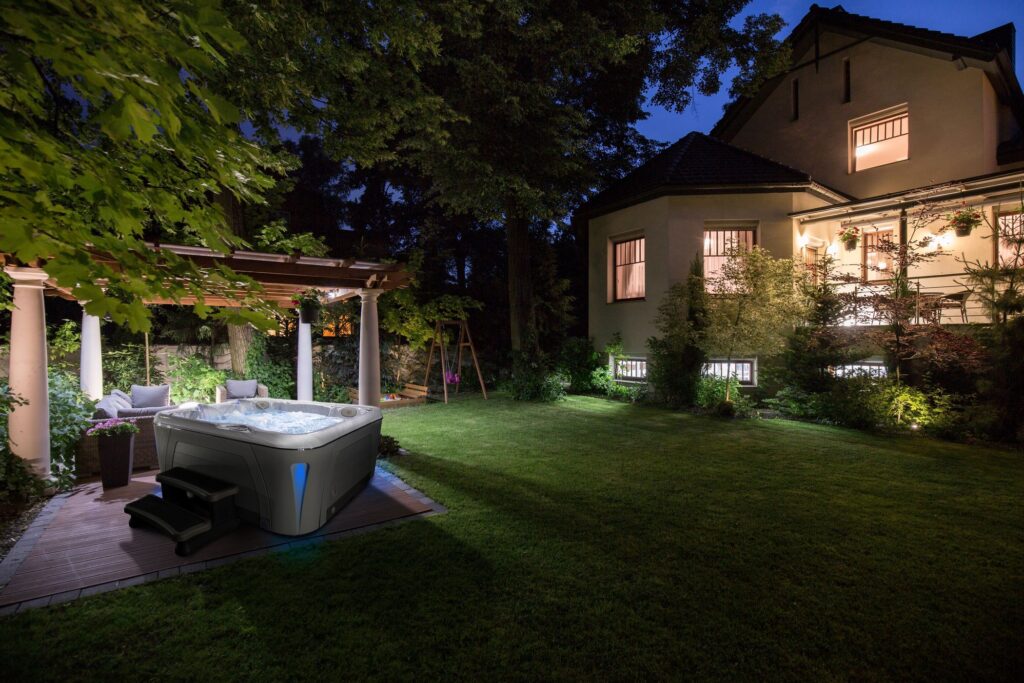What Does a Hot Tub Weigh? Installation Planning & Considerations
If you’ve made the decision to purchase a hot tub, now comes the planning phase. You’ll need to choose a location for your new spa, think about the type of foundation you’ll need to support the tub and its occupants while keeping in mind other factors such as an electrical source and environmental conditions. Hot tubs are an incredibly heavy item and need proper installation support. As an example, a 450 gallon, 6-8 seater hot tub can easily each over 5,500 pounds once filled with water and bathers. This article will go over some of the aspects you should be taking into consideration when planning to install a hot tub.
Choosing A Hot Tub
Selecting the type of hot tub you want should take place before you start planning on where to put it and how to install it. Consider how much money you want to spend, how many people you think will use the tub on a regular basis and the type of extras, add-ons or features you want included with your hot tub. Once you’ve narrowed down these variables, the appropriate tub should become apparent while its size and style will play a large role in the installation planning.
Setting the Groundwork
You’ll need a stable, level surface for your hot tub. A concrete slab would be ideal, although a lot of people like to place their hot tub on a deck. You might want to consider locating the hot tub on a concrete slab and building a deck around the tub itself. To calculate the weight of the hot tub you should add the tub’s dry weight to the amount of water it can hold, (1 litre of water weighs 1 kilogram or 2.2 pounds) and add an average weight of 185 pounds per occupant. This will give you the total weight of the tub which you can divide by the size of the tub in square metres giving you a number in kilograms per square metre. This is the load that your surface must support. A structural engineer can help with deck or concrete pad designs to ensure they can withstand the load.
Deciding on A Location
One factor you’ll need to consider before all others is whether you’ll be able to get the hot tub from the curb to area you want to set the hot tub. You don’t want to have to dismantle your house in a fit of panic when the hot tub arrives in your driveway. Knowing beforehand that there’s a clear path to your ideal location will prevent frustration and rash decisions. Other factors to consider when choosing a location would be having enough space to uncover the hot tub, ease of access from the house, room for furniture and accessories and having enough space for foot traffic around the tub. You’ll also want to think about privacy issues, weather conditions such as access to sun or shade, the location of leaf shedding trees and the tub’s orientation to take in the best view.
Electrical Safety Considerations
You’ll need the proper electrical outlet installed within easy reach of the tub. This will require an electrician if there’s isn’t an appropriate existing outlet. A device known as a ground fault circuit interrupter (GFCI) is necessary to shut the tub down in case of electrical problems. An easily accessible emergency shut off switch at least 5 feet away must also be installed. If you’re placing the tub on a concrete pad, wiring will have to be installed before the pad is laid.
Hot Tub Servicing
You’ll need to make sure the hot tub’s motor and pump are easily accessible for servicing and maintenance. If you’re planning on building a deck around the hot tub, this is something to keep in mind. A simple access door or hatch can solve this problem or you may want to keep an open area to allow for any maintenance to be performed.
To learn more about how much a hot tub can weigh and installation considerations, download a hot tub buyer’s guide.

